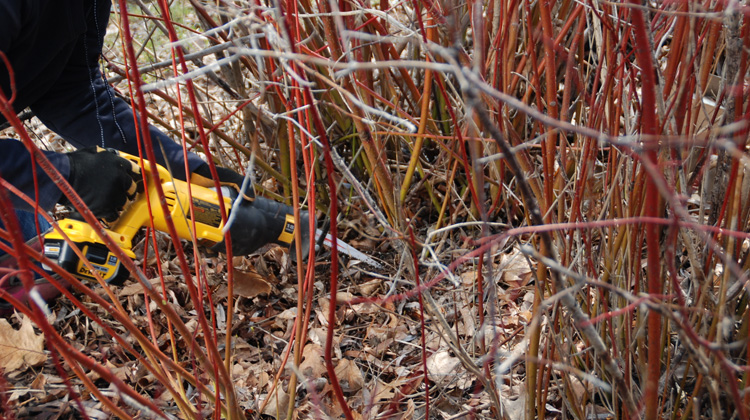
Best Pruning Tool for the Job
Pruning What equipment do I need? And does it need to be sanitized?
A bypass hand pruner is a must for all gardeners. They have two sharp blades and make a clean cut like scissors.
Anvil pruners have one flat and one sharp blade. These crush stems and should only be used for removing dead wood or not at all. Hand pruners work best on small diameter branches of ½ inch or less.
Loppers are long handled pruners that extend your reach into the shrubs and increase leverage for cutting larger diameter branches. Check the manufacturer’s guidelines for the size branches that can be cut with the brand of loppers you own. In general, don’t cut branches thicker than the diameter of the closed blades.
A short bladed pruning saw is good for larger branches. The short blade allows you to negotiate the dense thicket of stems.
Some gardeners use a reciprocating saw. The power and narrow blade allow them to remove hard-to-reach stems in the center of the plant.
Hand or powered hedge shears should only be used when shearing plants into hedges, topiaries or formal geometric shapes. These tools are designed to cut several stems at once. Though they speed up the process they eliminate the natural shape of the plant and create lots of stubs that make perfect entryways for insects and diseases.
Disinfecting your tools can help reduce the spread of disease. Dip pruning blades in a 10% bleach solution or alcohol between cuts to avoid spreading a disease throughout the plant. Disinfect tools between plants or plantings to reduce the risk of spreading a disease throughout your landscape.
Related
Upcoming Live Events
& Webinars
April 18, 2024
Be a Waterwise Gardener
Golden Rondelle Theater, Racine, WI
Register now
April 20, 2024
Pruning Hydrangeas and Other Shrubs
Pasquesi Home & Gardens, Lake Bluff, IL
April 27, 2024
Ridges & Rivers Book Festival
Viroqua, WI
April 28, 2024
Flowering Trees and Shrubs
Ebert's Greenhouse Village, Ixonia, WI
May 1, 2024
FREE WEBINAR
Ornamental Fruits and Vegetables
Register now
May 4, 2024
Garden U 2024
New Richmond, WI
Register now
May 9, 2024
FREE WEBINAR
How to Plant Your Rain Garden
Register now
May 11, 2024
Ask The Plant Doctor Q & A
Ebert's Greenhouse Village, Ixonia, WI
May 12, 2024
Ask The Plant Doctor Q & A
Ebert's Greenhouse Village, Ixonia, WI
May 18, 2024
Ask The Plant Doctor Q & A
Ebert's Greenhouse Village, Ixonia, WI
June 1, 2024
Selecting, Planting, Pruning and Caring for Hydrangeas
Ebert's Greenhouse Village, Ixonia, WI
June 5, 2024
FREE WEBINAR
Under-Appreciated Pollinators
Register now
WATCH ON-DEMAND WEBINARS
Learn More










